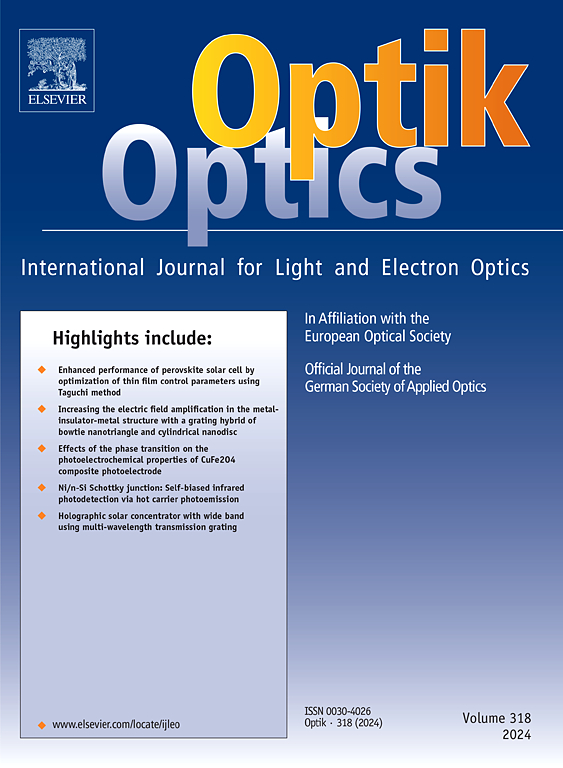Quick and simultaneous measurement of Phase retardation and azimuth of arbitrary wave plate based on phase compensation and dual-frequency laser heterodyne interferometry
IF 3.1
3区 物理与天体物理
Q2 Engineering
引用次数: 0
Abstract
In this paper, a simple, quick and ingenious wave plate (WP) measurement method based on phase compensation and dual-frequency laser heterodyne interferometry is proposed. A key rotatable half wave plate (HWP) is used for modulating the phase of the measurement signal and compensate it to the maximum and minimum values in sequence. By only measuring the extreme values of phase difference change between the measurement and the reference signal as well as fast axis azimuth of the HWP, the phase retardation and fast axis azimuth of arbitrary WP can be derived simultaneously and quickly. The phase retardation’s measurement avoids the influence of the azimuth positioning accuracy of optical components that typically exists in many methods. The signal processing adopts phase detection means, which means higher accuracy than that by intensity detection means. The reference and measurement paths both contain p and s polarization components, so the system has the common optical path property, which means good stability. Error analysis shows the measurement uncertainty of the phase retardation is about 3.2′, and that of the fast axis azimuth is about 5'' (arcsecond) under existing experimental conditions. The experimental comparison results show good agreement with those by other two methods.
基于相位补偿和双频激光外差干涉的任意波片相位滞后和方位角的快速同步测量
本文提出了一种基于相位补偿和双频激光外差干涉测量的简单、快速、巧妙的波片测量方法。采用键可旋转半波片(HWP)调制测量信号的相位,并按顺序将其补偿到最大值和最小值。通过测量测量值与参考信号之间的相位差变化极值以及HWP的快轴方位角,可以同时快速地推导任意WP的相位延迟和快轴方位角。相位延迟的测量避免了许多方法中存在的对光学元件方位定位精度的影响。信号处理采用相位检测手段,比强度检测手段精度更高。参考光路和测量光路都包含p偏振分量和s偏振分量,因此系统具有共同光路特性,这意味着良好的稳定性。误差分析表明,在现有实验条件下,相位延迟的测量不确定度约为3.2′,快轴方位角的测量不确定度约为5′(弧秒)。实验结果与其他两种方法的结果吻合较好。
本文章由计算机程序翻译,如有差异,请以英文原文为准。
求助全文
约1分钟内获得全文
求助全文
来源期刊

Optik
物理-光学
CiteScore
6.90
自引率
12.90%
发文量
1471
审稿时长
46 days
期刊介绍:
Optik publishes articles on all subjects related to light and electron optics and offers a survey on the state of research and technical development within the following fields:
Optics:
-Optics design, geometrical and beam optics, wave optics-
Optical and micro-optical components, diffractive optics, devices and systems-
Photoelectric and optoelectronic devices-
Optical properties of materials, nonlinear optics, wave propagation and transmission in homogeneous and inhomogeneous materials-
Information optics, image formation and processing, holographic techniques, microscopes and spectrometer techniques, and image analysis-
Optical testing and measuring techniques-
Optical communication and computing-
Physiological optics-
As well as other related topics.
 求助内容:
求助内容: 应助结果提醒方式:
应助结果提醒方式:


